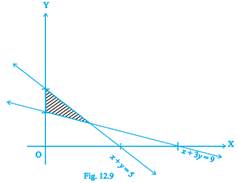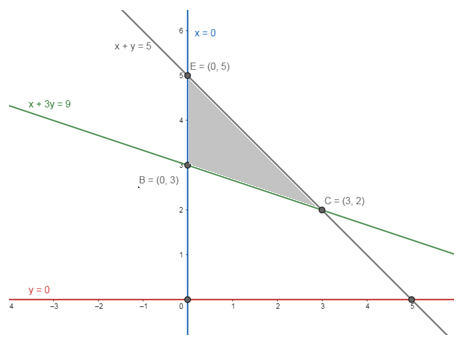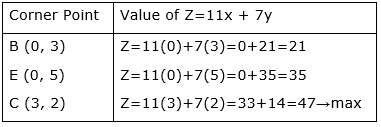Refer to Exercise 7 above. Find the maximum value of Z.
Given:
Z=11x + 7y

From the given figure it is subject to constraints
x + y ≤ 5, x +3y ≥ 9, x ≥ 0, y ≥ 0
Now let us convert the given inequalities into equation.
We obtain the following equation
x + y ≤ 5
⇒ x + y = 5
x +3y ≥ 9
⇒ x +3y = 9
x ≥ 0
⇒ x=0
y ≥ 0
⇒ y=0
The region represented by x + y ≤ 5:
The line x+y=5 meets the coordinate axes (5,0) and (0,5) respectively. We will join these points to obtain the line x+y=5. It is clear that (0,0) satisfies the inequation x + y ≤ 5. So the region containing the origin represents the solution set of the inequation x + y ≤ 5
The region represented by x +3y ≥ 9:
The line x+3y=9 meets the coordinate axes (9,0) and (0,3) respectively. We will join these points to obtain the line x+3y=9. It is clear that (0,0) satisfies the inequation x +3y ≥ 9. So the region that doesn’t contain the origin represents the solution set of the inequation x +3y ≥ 9.
Region represented by x≥0 and y≥0 is first quadrant, since every point in the first quadrant satisfies these inequations
The graph of these equations is given.

The shaded region BEC is the feasible region is bounded, so, minimum value will occur at a corner point of the feasible region.
Corner Points are B (0, 3), E (0,5) and C (3,2)
Now we will substitute these values in Z at each of these corner points, we get

Hence, the maximum value of Z is 47 at the point (3, 2).